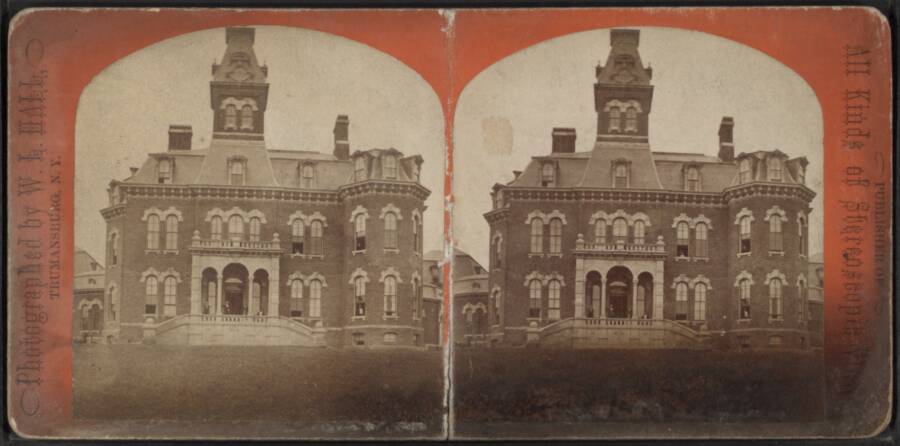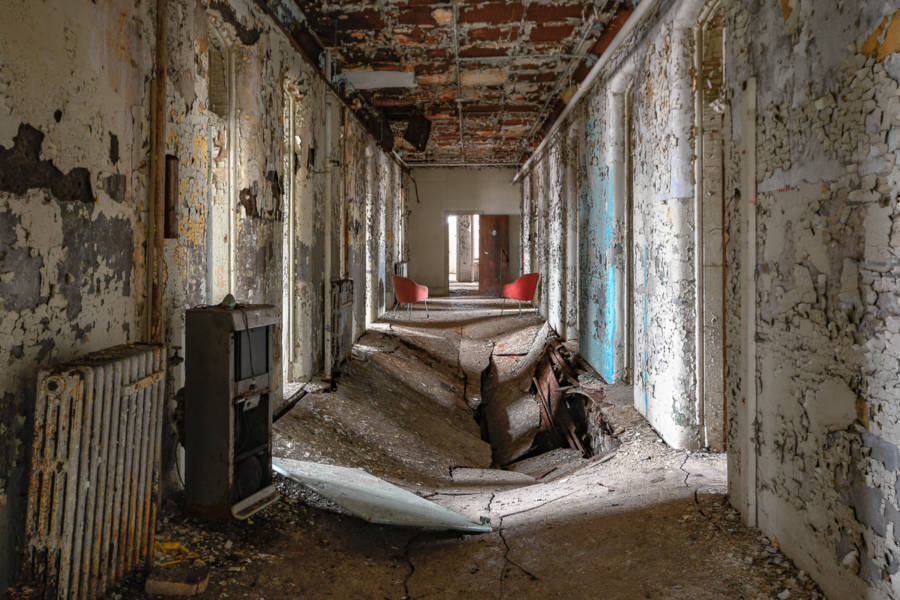Willard Asylum: One Of The Creepiest Places In New York State

Public DomainWillard Asylum, one of the scariest places on Earth, pictured shortly after it opened. 1875.
From far away, Willard Asylum in Ovid, New York looks stately and grand. But as you get closer to this former insane asylum, you’ll quickly see that it’s one of the creepiest places in New York. Though the asylum is now rarely opened to the public, those who do go inside will be greeted with peeling wallpaper, abandoned operating rooms, and debris left behind from countless patients.
Willard Asylum is an eerie site today, but it actually opened up in the 1860s as a hopeful place. Previously, people deemed “feebleminded” or “lunatics” were kept away from society in deplorable conditions. Willard Asylum, and other reform-minded 19th-century asylums, sought to change this.
Its first patient, for example, was a woman named Mary Rote who arrived in 1869. Rote was described as “demented” and “deformed” and she had spent the previous 10 years chained up in a poorhouse.

Freaktography/FlickrA deteriorating hallway at the now-abandoned Willard Asylum.
“Several men brought a deformed, demented woman down the gangplank,” Dr. Robert Doran, who wrote History of Willard Asylum for the Insane and the Willard State Hospital, explained. “Her wrists were chained together. Mary Rote from the Columbia County poorhouse was the first of many thousands to arrive at the State Institution called Willard Asylum.”
Rote and other patients were treated with far more dignity than they had ever experienced before in previous facilities, and their mental and physical health improved as a result. That said, patients at Willard Asylum were cared for with popular treatments of the 19th and 20th centuries, which included frigid ice baths and rudimentary electroshock therapy.
Willard Asylum remained open until 1995 when it, alongside many other mental asylums across the United States, started to shut down. But Willard Asylum’s story didn’t end there. Shortly after it was closed, an employee making a sweep of the grounds discovered 400 suitcases belonging to former patients tucked behind a door in the asylum’s attic.
The luggage had been dutifully stored there when patients checked in. Because many patients spent their entire lives at Willard Asylum, the suitcases remained there, filled with personal belongings like photographs and newspaper clippings, as well as practical items like toothpaste. Many of these thought-provoking artifacts can now be viewed online.





